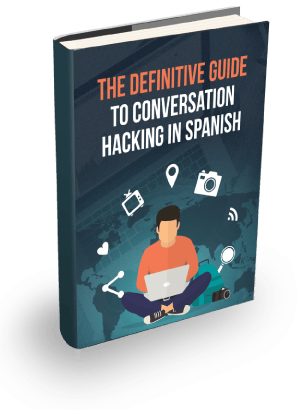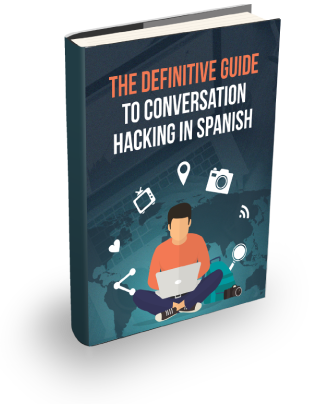Cuba was awesome. It far surpassed my expectations.
Cuban Spanish was a challenge but not impossible.
Before our trip, I was nervous to travel through Cuba. I wasn’t sure how safe the country was. I also wasn’t sure how the locals felt about tourists.
After years of problematic foreign relations with the United States, would the Cuban people have a negative opinion of foreigners (specifically foreigners from English-speaking countries)?
In the end, it turned out that I had nothing to worry about.
After a week of travelling around Cuba, we completely fell in love with the country.
The food was amazing. The people were incredibly warm and welcoming. There was so much to do and see and learn.
How to see Cuba
To see as much of the country in a short time frame we organised a tour. The tour included a driver and guide for a week. All accommodation and a number of meals were included—mostly breakfasts.
The first day of the tour involved a look around the main city in Cuba, Havana. The culture and life in the city really impressed us.
Recently, the Cuban government has relaxed the regulations on businesses. This has allowed new restaurants and cafes to open around the central business district. As a result, there is now a growing scene of trendy places to eat and drink, which made for a vibrant atmosphere.
We spent our next few days in Viñales, which is a small town close to where they grow all of the Cuban tobacco. Next, we traveled to Santa Clara where they have a museum and monument dedicated to Che Guevara. To finish we spent a few days in Trinidad, which is a beautiful, authentic town close to the beach.
Cuban Spanish
Cuban Spanish is fast and the accent is strong.
The people tend to shorten words by dropping the letters ‘s’ and ‘d’.
For example,
English: I’m tired.
Español: Estoy cansado. (Normal Spanish)
Español: Etoy cansao. (Cuban Spanish)
If you are used the Spanish of another Spanish country, this change will take some adjustment.
To adjust your listening skills as quickly as possible, the key is getting involved in as many conversations as possible. It is much easier to ask questions and control the context than listen in on other conversations and hope to pick it up.
Conclusion
If you are considering a trip to Cuba to see the country or practice your Spanish, it is absolutely worth it. I can’t recommend it enough.
Even if you have a lot of time, I would still recommend an organised tour. This is to avoid any battles you may face with an unreliable public transport system.
Is Cuba on your list of places to see?




Hey Andrew – thanks for the great post and video. Me encantó mi viaje a Cuba el año pasado y también visitó Havana y Trinidad.
An an advanced beginner speaker, I was shocked when words like ‘esquina’ became ‘equina”. Talk about having to get context!
But I also found the people so friendly and happy and willing to stop and talk to a visitor – I even have una amiga and we are in touch via email.
Your video brought back very happy memories – yo regresaría a Cuba in a shot!
Do enjoy the rest of your trip – warmest Tony
Hi Tony, I was thinking of what you had told me as I travelled through Cuba. It is a wonderful place to visit. I’m so happy to hear that the video brought back happy memories for you.
We too would return in a heartbeat and are asking each other when the next opportunity will be to return.
Loved hearing about your experiences in Cuba.
We went in May and hired a car and drove around the whole island.
It looks like we even ate in the same restaurant in Trinidad!
I was the designated Spanish speaker in our group and even though I’d only been learning for 18 months I managed reasonably well.
Outside Havana not much English is spoken so I had to take care of everything.
Finding accommodation and food, asking for directions (and understanding the replies!) and most difficult of them all, sorting everything out when we had a puncture.
It was the first time I’d needed to rely on my Spanish to get by and I was quite pleased that I managed so well, also, my friends were very impressed which is of course the most important thing. 🙂
Thanks for sharing Darren. I think the Cuban accent is quite challenging so it’s great that your Spanish could get you through. It’s fantastic that you had an opportunity to test your Spanish out, in particular I could imagine that the situation with a puncture would have been particularly stressful. And make for a great story!
I am a Spanish teacher who happened upon your website while looking for an explanation of the differences in usage between “quedar” and “quedarse”. Google is a wonderful thing. When I scrolled to the bottom, I saw your article about traveling to Cuba. I am taking some of my high school students there in a couple years. We are so excited! This is an amazing opportunity and I can’t wait to see what doors this trip will open for them in their future education and careers. Gracias por compartir con nosotros!
Hola Señora Shaw, thanks for your comment. I have no doubt the trip will be an unforgettable experience for your students. Thanks for reading.
Thanks for sharing your trip to cuba and the DR, really nice posts… Just one question about Cuba, I have heard that once you start going around havana you get this feeling of being kind of in the past (I guess it’s because the old cars and stuff like that), would you agree with that?
Hola Deigo, yes, I do think you can get a sense of what it might have been like to live in the past. But, of course, there are a few things such as seeing people congregating outside hotels to get free Wifi that will pull you back to the modern day.
Havana was a fantastic city to visit and I plan to go back.
Listen to the song “Qué Demasíao” by Joaquín Sabina. Good practice with the “ao” ending.
Thanks for sharing Kim, I’ll check it out!